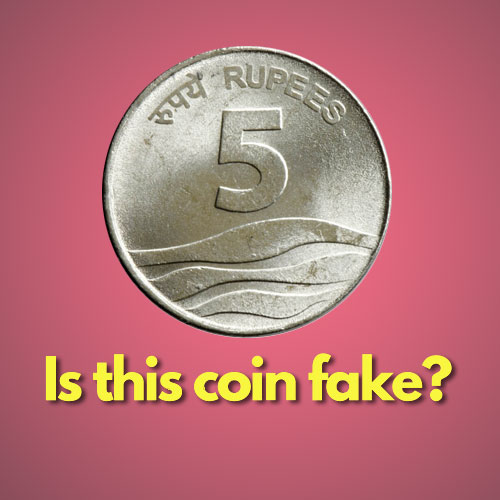How to Spot a Fake Coin
2020-04-07 Tue
When growing your coin collection, it’s imperative to work with someone that is reputable and reliable. But no matter where you’re procuring your coins, especially if a coin is particularly valuable or rare, you must be on the lookout for counterfeits. Spotting fake coins may be tough, but it’s doable.There are three common types of counterfeit coins and three key ways to identify these different fakes. With a bit of know-how, you’ll be protected from unknowingly wasting money on fakes.
Three Types of Counterfeit Coins
Cast Coins: Casting fake coins is the cheapest and most common way to counterfeit. By using an authentic coin’s casted mold, a counterfeiter pours a mixture of metal in it to create a fake. These molds have often been taken or copied from a facility to produce a coin with a startling likeness to the original. A cast coin is preferable to a struck coin because it’s a quick, easy way to replicate coins. The mixture of liquid metal poured into the cast often results in a coin that is nearly indistinguishable from the real coin you’re seeking to add to your collection.
Struck Coins: Counterfeiting struck gold and silver coins is a more complicated process than casting fake coins. Essentially, false struck coins are created similar to the method used by mint manufacturers. The counterfeit is created by placing a flat, round metal disk, called a planchet, between two coin dies. These coin dies are pressed together by a hydraulic press, molding the planchet into a replica coin.
Doctored Coins: A doctored coin is created by altering a regular coin until it looks either rare or antique. A common coin, cast by a mint, is distressed with slight engravings or etchings, so it appears more valuable than it is. Alternatively, counterfeiters will “split” coins. Splitting is a counterfeit style where two coins, one inexpensive and one seemingly rare, are merged to create one that appears to be valuable.
How to Identify a Counterfeit Coin
Dimensions: Each coin produced by the India Mint has specific dimensions that verify the authenticity of a coin. These dimensions include the coin’s metallic content, weight, diameter, thickness, and year of minting. You can check some of the measurements of the coins through this technique.
Visual: Examine the coin in question with the assistance of a magnifying glass. Look for small inconsistencies such as mismatching surface texture, text spacing, seams, markings, and edges. Then, compare these visuals to an authentic coin- you can either compare to the one you already own or find a high-quality image online. If you notice differences between these two coins, you may very well have a counterfeit coin on your hands.
Magnetic: Both silver and gold are non-magnetic metals. For this reason, neither a fine gold nor a fine silver coin should have any magnetic reactivity to a magnet. This is a very simple test- grab a magnet, preferably a stronger one, and place it near your precious metal coin. If the coin is attracted to the magnet, you know you have a fake. Iron and steel are very magnetic metals and are often used in the production of counterfeit coins.
While it’s possible you’ll stumble across a counterfeit coin, and now you’re equipped with the knowledge to spot them and not waste your money. For future purchases, it’s crucial to purchase from a reputable company like Mintage World, to protect and continue to grow your collection.
Latest News
-
Mahatma
2024-04-25 ThuIndia Post issued a commemorative postage stamp on #LalaHansraj, also known as Mahatma Hansraj for�...
-
Berar Mint of Muhammad Akbar
2024-04-25 ThuBerar was a kingdom located in the Deccan region, with Elichpur as its capital. It was one of the Su...
-
Janma Kalnayak of Bhagwan Mahavir
2024-04-24 WedOn 21st April 2024 which was the 2550th Janma Kalnyanak of Bhagwan Mahavir Swami, PM Modi unveile...
-
Gold Pagoda of Vijaynagar Empire King Deva Raya I
2024-04-10 WedKing Deva Raya I of the Vijayanagara Empire was a patron of Kannada literature and architecture. He ...
-
Silver Denarius of Septimus Severus
2024-04-05 FriLucius Septimius Severus served as the Roman emperor from 193 to 211 AD. Severus sat on the throne o...

